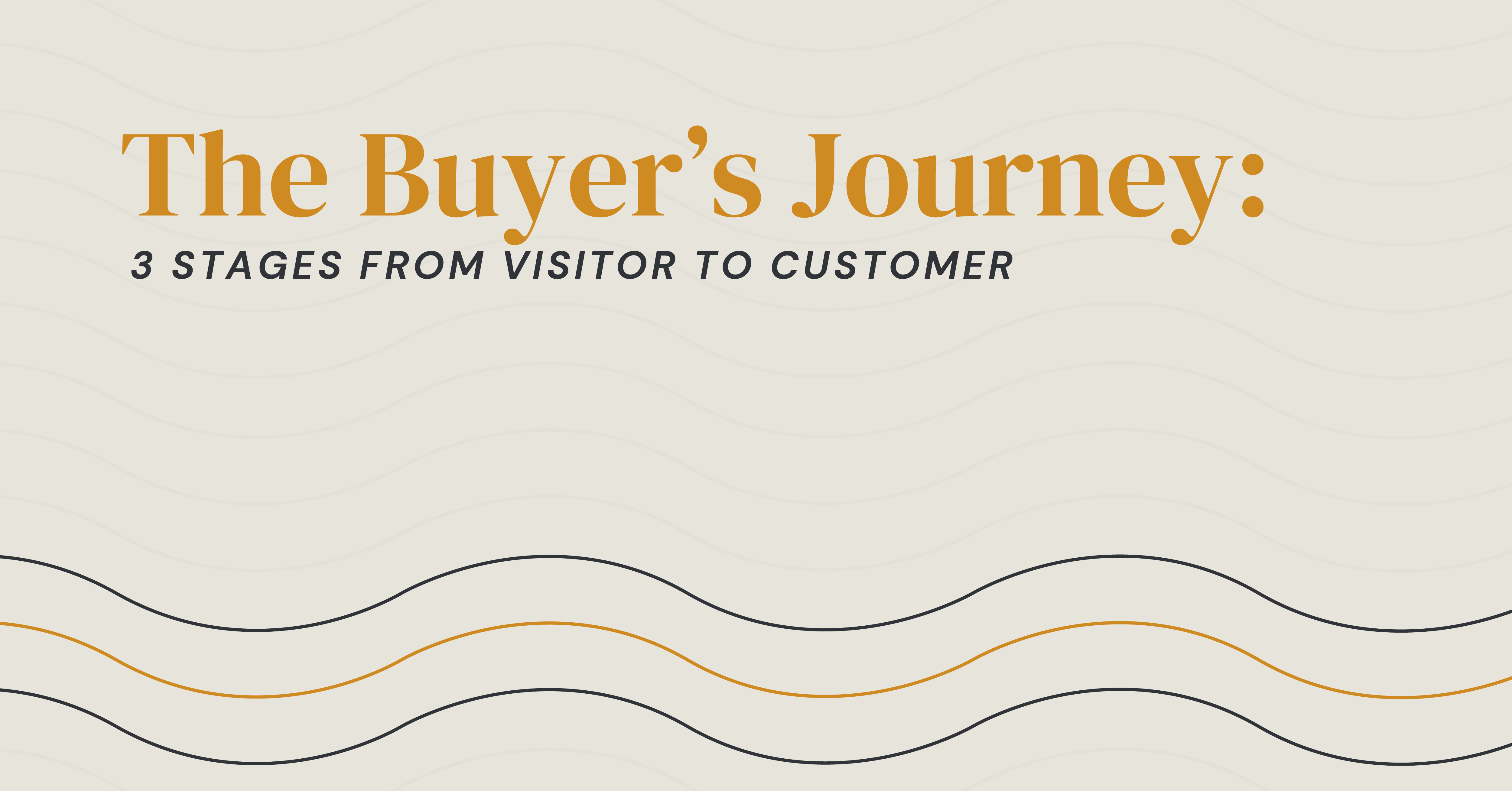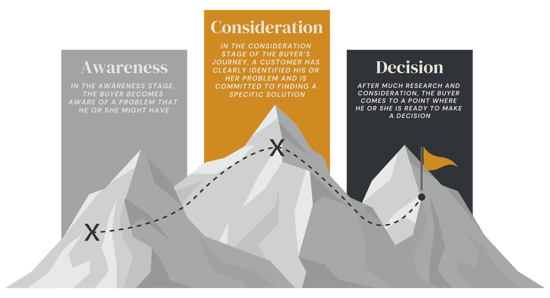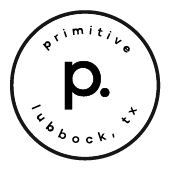BLOG The Buyer's Journey: 3 Stages From Visitor to Customer
The Buyer's Journey: 3 Stages From Visitor to Customer
POSTED BY The Prim Pack | Dec 8, 2021

Digital marketing is a proven, trusted method of attracting potential customers and generating leads. But at times, it can feel overwhelming. There are many different directions your efforts can take, dozens of platforms you can choose from to connect with your audience, and an abundance of ways you can attract visitors to your website.In the midst of so many options, how do you decide how to focus your digital marketing efforts? While there are many things that will impact this answer, two of the most important are your buyer personas, and your prospect’s buyer journey.
What is the Buyer’s Journey?
In a nutshell, the buyer’s journey is a framework for describing the active research process a potential buyer goes through prior to a purchase. Today’s buyer is more informed than ever before, which means that your website and marketing need to accommodate their needs. The buyer’s journey framework is made up of three stages: awareness, consideration, and decision.
Each stage presents a unique opportunity to position yourself in front of your ideal customer as a valuable, helpful option to meet their needs and solve problems. But, being able to do this requires that you have a clear understanding of each stage of the buyer’s journey and what needs a potential customer will have at each stage.

The Awareness Stage
In the awareness stage, the buyer becomes aware of a problem that he or she might have:
- I have a sore throat.
- I want to reduce the amount of water needed to water my yard.
- My home needs a new roof.
This problem, whether large or small, will require your potential customer to begin researching. Some of this research will be done through the customer’s social networks: asking on social media or for word of mouth recommendations. But much of this research will also be done online.
This online research will be somewhat neutral. The buyer isn’t looking for a specific vendor or solution, but rather to obtain an idea of what is available to relieve or fix the problem. You will want to provide information that keeps this generic search in mind. Here are some examples of the kind of content you could present online:
- Educational blog posts
- Ebooks
- Reports
- Infographics
The content you share for potential customers in the awareness stage needs to focus on being helpful, educational, and valuable. Think of words that you would search for if you had a similar problem. Then create content that incorporates those keywords in a valuable way.
The Consideration Stage
In the consideration stage of the buyer’s journey, a customer has clearly identified his or her problem and is committed to finding a specific solution. Their research has narrowed in focus because they already understand the different methods and approaches available to solving this problem and are seriously considering their options.
In our examples above, potential customers may now say:
- I know I have strep throat. What are my options for curing it?
- I want to reduce the amount of water needed to water my yard using methods that are cost effective, environmentally friendly, and easy-to-use.
- A metal roof would be the best option for my home, and I know I want to use a local roofer.
Again, you want your content to be valuable and educational. The more you are willing to offer great information to your audience, the more likely they are to keep you in mind when it comes to solving their needs. Some of the content you will want to share includes:
- White papers
- User guides
- Videos or podcasts
- Webinars
Think like your customers. If you were at this stage of their problem, what words would you use in your search? Incorporate these into your content in a natural way.
The Decision Stage
After much research and consideration, the buyer comes to a point where he or she is ready to make a decision. At this point, the buyer has a full and complete understanding of his or her problem, and a definite grasp of how they want to solve it.
Content for people in this stage no longer needs to be educational. Instead, it needs to be definitive. You want to share why your product or service is a clear choice to solve this particular problem. You can do that through any of the following:
- Testimonials
- Video Testimonials or Demonstrations
- Product Comparisons
- Free Trials
- Webinars
Think like your customers. Some prospects will come to your website already in the decision stage. Accommodate them by having a chat feature that allows a prospect to immediately connect with a sales person.
Understanding the Buyer’s Journey and Acting Accordingly
A clear knowledge of where your buyer is in their journey will influence the content you share and allow you to tailor it to meet their specific needs at that stage. Your ability to do this well makes you more likely to turn a visitor to your site into a customer for your business. The process starts by making clear, detailed buyer personas.
Creating this kind of targeted content and marketing is not simple. It requires an intimate and intentional knowledge of your customers and prospects, as well as in-depth knowledge of how to market well. One of the ways to accomplish this kind of successful marketing and customer care is by partnering with an agency. This allows you access to a wide range of talent, as well as significant experience. Interested in learning more about this kind of partnership? Our team would love to meet with you and share more!
SHARE THIS POST:

About the writer, The Prim Pack
Primitive is a full-service digital agency specializing in strategy, branding, web development, and technology solutions. With a passion for innovation and a commitment to helping businesses grow, our team crafts digital experiences that make an impact.
